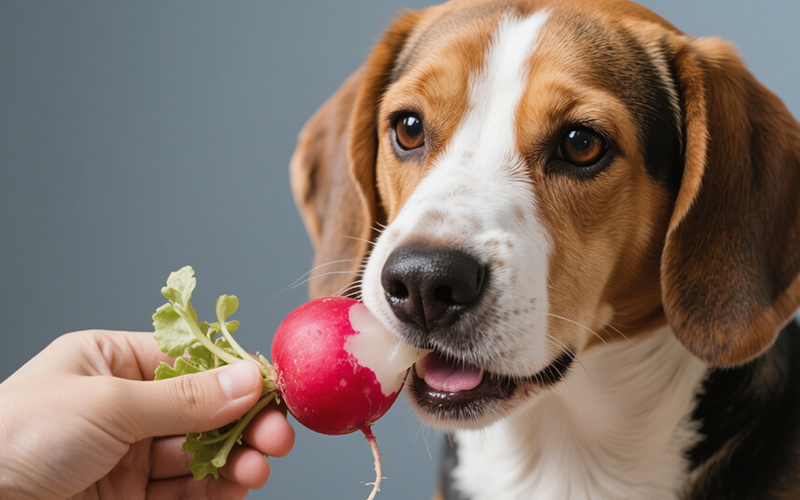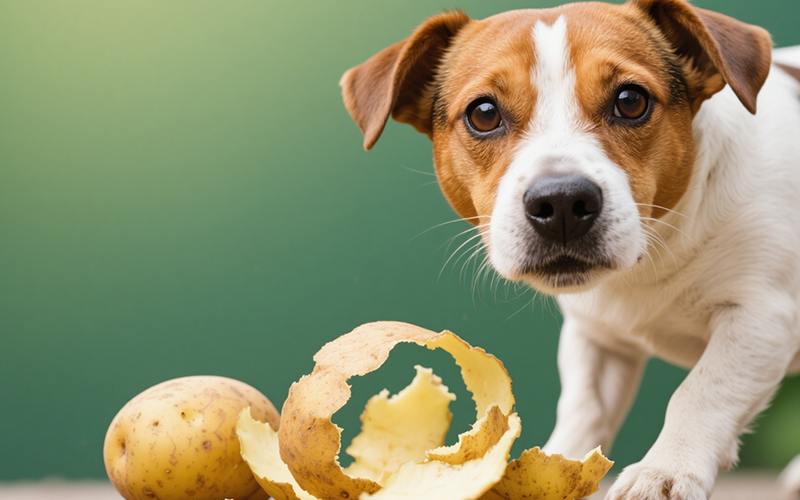Can Dogs Eat Graham Crackers? The Risks and Benefits of Graham Crackers for Dogs
- 13 Mar 2025 11:29
As a dog owner, you might be tempted to share some of your favorite snacks with your furry friend. One popular snack that many people enjoy is graham crackers, whether as a base for s’mores or simply as a quick snack. But if you’re wondering whether it's safe to share a graham cracker with your dog, the answer is not as simple as yes or no. While dogs can eat graham crackers in small amounts, there are some important things you should know before offering them to your pet.
In this article, we will discuss the potential risks and benefits of giving graham crackers to your dog, how to safely offer them, and healthier alternatives you can consider for your dog.

Can Dogs Eat Graham Crackers? 🍪
The short answer is yes, dogs can eat graham crackers in moderation, but it’s not the healthiest snack for them. Graham crackers are not toxic to dogs, and a small bite here and there isn’t likely to harm them. However, like many human foods, they are best given as an occasional treat rather than a regular part of your dog’s diet. Let's take a closer look at why that is.
What Are Graham Crackers Made Of? 🌾
Graham crackers are made from a combination of ingredients like whole wheat flour, sugar, honey, and a bit of salt. The crackers are typically baked until crispy and crunchy, making them a popular snack for people. For dogs, the main concern is the added sugar and other ingredients that may not be ideal for their health.
Nutritional Value of Graham Crackers for Dogs 🐾
While graham crackers do offer some basic nutrients, such as carbohydrates and a small amount of fiber, they are not particularly nutrient-dense for dogs. Let’s break down what your dog will get from a graham cracker:
Carbohydrates 🍞: Graham crackers provide energy through carbohydrates, but dogs don’t need excessive carbs in their diet. Most of your dog’s energy should come from high-quality protein sources rather than from processed snacks.
Sugar 🍬: One of the main ingredients in graham crackers is sugar, which is not ideal for your dog. Too much sugar can lead to weight gain, obesity, diabetes, and other health problems. While the amount of sugar in a single graham cracker may not be immediately harmful, it’s best to avoid giving your dog sugary snacks on a regular basis.
Honey 🍯: Some graham crackers contain honey, which is generally safe for dogs in small amounts. Honey can even offer some benefits, such as antibacterial properties, but it still contains sugar, so it should be given sparingly.
Whole Wheat Flour 🌾: Whole wheat flour, while generally a healthier option than refined white flour, is still a carbohydrate. Dogs don’t need a large amount of wheat in their diet, and some dogs may have sensitivities or allergies to wheat or gluten.
Salt 🧂: Salt is often added to graham crackers for flavor, and while a small amount of salt is not typically harmful, too much salt can lead to dehydration, kidney problems, and high blood pressure in dogs. It’s important to avoid over-salting your dog's treats.
Potential Risks of Graham Crackers for Dogs 🚨
Although graham crackers are not toxic to dogs, there are several reasons why they may not be the best treat for your pet:
High Sugar Content 🍭: As mentioned, the sugar content in graham crackers is one of the biggest concerns. Excessive sugar consumption can lead to weight gain, dental problems, and the risk of diabetes. Dogs do not need sugar in their diet, and it's always better to opt for snacks that are low in sugar or free from it.
Excessive Carbs 🍞: Dogs are primarily carnivores, meaning their bodies are designed to process protein and fat, not large amounts of carbohydrates. Frequent consumption of carb-heavy foods like graham crackers can lead to digestive issues, weight gain, and an imbalance in their diet.
Gluten Sensitivity 🌾: Some dogs may have a sensitivity or allergy to gluten, which is found in wheat products like graham crackers. If your dog experiences symptoms like vomiting, diarrhea, or itching after consuming graham crackers, it may be a sign that they’re sensitive to gluten.
Choking Hazard 🚨: While graham crackers aren’t likely to be a choking hazard, they can be hard for smaller dogs or puppies to chew properly. Always break them into smaller pieces before giving them to your dog to reduce the risk of choking.
Potential Additives 🏷️: Some store-bought graham crackers contain added preservatives, artificial flavorings, and other chemicals that aren’t ideal for your dog. Always check the ingredients before sharing food with your pet, and avoid products with artificial additives.
How to Safely Feed Graham Crackers to Your Dog 🍪
If you decide to share a graham cracker with your dog, there are a few guidelines you should follow to keep your dog safe:
Limit the Quantity ⚖️: Only offer graham crackers in small amounts. A small piece of a cracker is enough to satisfy your dog’s curiosity without overloading them with sugar, carbs, or salt. Remember, graham crackers should only be an occasional treat, not a regular snack.
Opt for Plain, Unsweetened Crackers 🚫: If possible, choose plain graham crackers without any added sugar, honey, or artificial ingredients. This will minimize the sugar content and make the treat a little healthier for your dog.
Check for Gluten Sensitivity 🌾: If your dog has known sensitivities to wheat or gluten, it’s best to avoid graham crackers altogether. There are plenty of gluten-free dog treats available that will be a safer alternative.
Avoid Giving Too Much at Once 🐾: If your dog is not used to eating high-carb treats, giving them too many graham crackers at once can cause digestive upset, including gas or diarrhea. Stick to small, infrequent servings.
Healthy Alternatives to Graham Crackers for Dogs 🥕🍏
If you’re looking for healthier treats for your dog, there are plenty of dog-friendly alternatives to graham crackers that are much more nutritious:
Carrot sticks 🥕: High in fiber and low in calories, carrots are a great crunchy snack for dogs.
Apple slices 🍏: A sweet and nutritious snack that is rich in vitamins and fiber (be sure to remove the seeds).
Sweet potatoes 🍠: Full of fiber, vitamins, and antioxidants, sweet potatoes make a nutritious treat for your dog.
Green beans 🥦: Low in calories and high in vitamins, green beans are a healthy snack for dogs.
Pumpkin 🎃: Full of fiber and great for digestive health, pumpkin is a great treat for your dog.
PettureX: Your Pet’s Health Assistant 🐾💻
If you’re unsure whether a food is safe for your dog, or if you’ve noticed your dog eating something they shouldn’t have, PettureX is a helpful resource. PettureX is an AI-powered pet health assistant that provides 24/7 online consultations and offers personalized advice on pet health and nutrition.
Conclusion: Can Dogs Eat Graham Crackers? 🍪
Dogs can eat graham crackers in moderation, but they should not be a regular part of their diet. While they are not toxic, graham crackers are high in sugar, carbs, and potentially harmful additives. Offering graham crackers as an occasional treat is fine, but it’s important to keep portion sizes small and avoid overly sweetened or flavored varieties.
For a healthier option, consider feeding your dog snacks like carrots, apples, or sweet potatoes, which are far more beneficial for their health and well-being.
Related

Radish Bites for Your Buddy? A Vet-Reviewed Guide on Whether Dogs Can Eat Radishes
- 22 Apr 2025
Potato Peels for Pooches? Unpeeling the Risks and Facts for Dog Owners
- 22 Apr 2025
Crunchy Curiosity: Can Dogs Safely Snack on Pork Rinds? A Deep Dive
- 21 Apr 2025
Pomegranate Seeds and Pooches: A Deep Dive into Whether Dogs Can Safely Indulge
- 21 Apr 2025
Can Dogs Eat Peaches? Vet Explains Benefits, Cyanide Risks & Safe Serving
- 16 Apr 2025
Can Dogs Eat Mulberries? Vet Explains Safety, Benefits & Potential Risks
- 16 Apr 2025
Can Dogs Eat Mozzarella? Vet Explains the Cheesy Truth (Risks & Benefits)
- 16 Apr 2025
Can Dogs Eat Maple Syrup? The Sugary Truth & Why Vets Advise Against It
- 16 Apr 2025
Can Dogs Eat Mango Skin? Vet Explains Why It's a Risky Chew!
- 16 Apr 2025
Can Dogs Eat Mac n Cheese? Vet Explains Why This Comfort Food Is Unsafe!
- 16 Apr 2025
